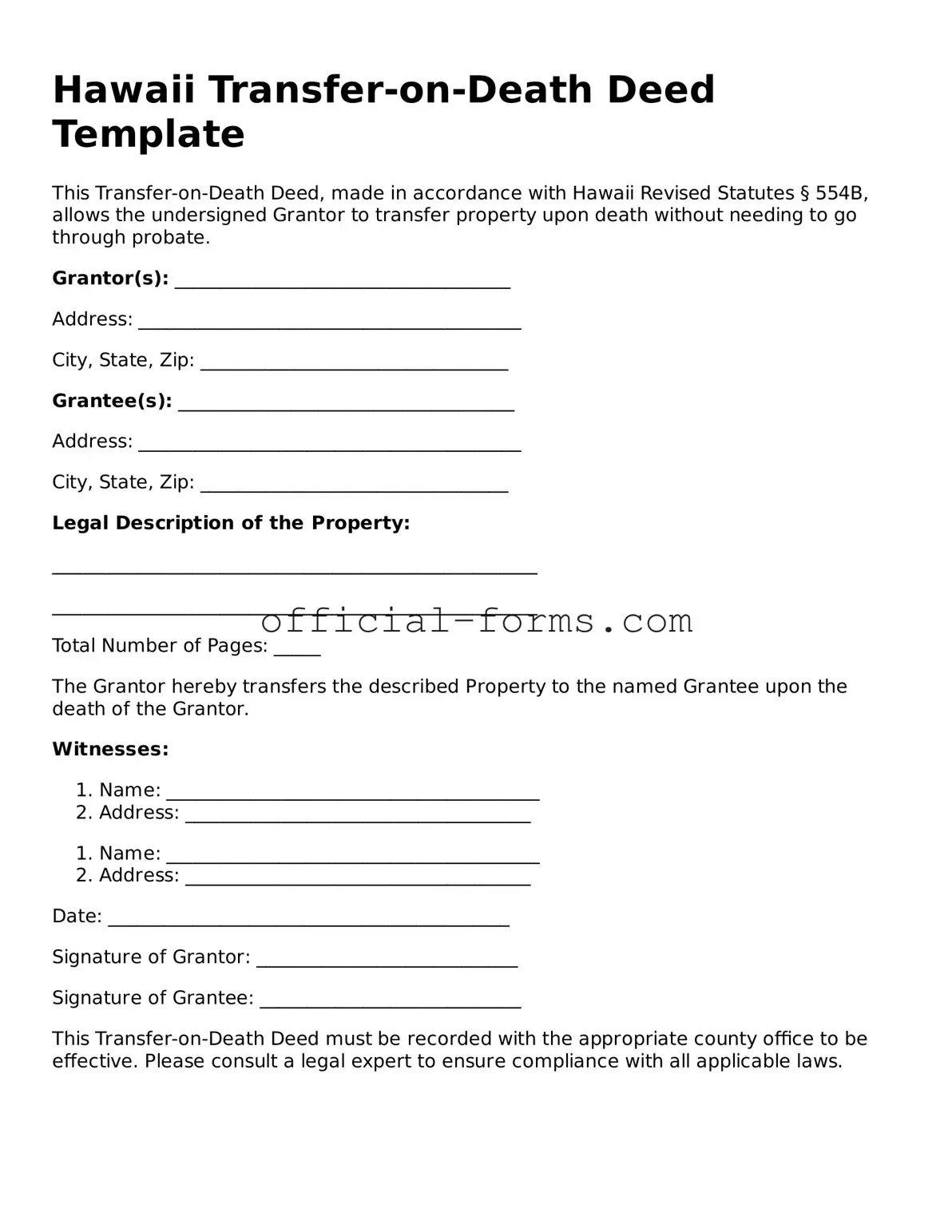Official Hawaii Transfer-on-Death Deed Document
The Hawaii Transfer-on-Death Deed form is a legal document that allows property owners to transfer their real estate to designated beneficiaries upon their death, avoiding the probate process. This form provides a straightforward way to ensure that your property is passed on according to your wishes without the complications often associated with inheritance. Understanding how to properly utilize this deed can simplify estate planning and provide peace of mind for both you and your heirs.
Open My Transfer-on-Death Deed Now
